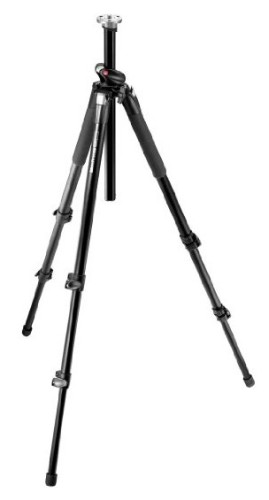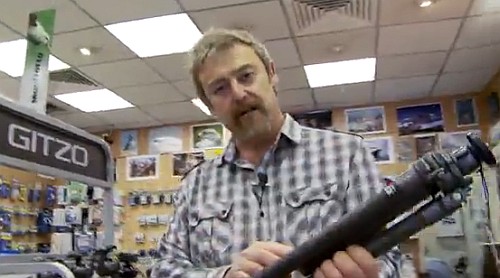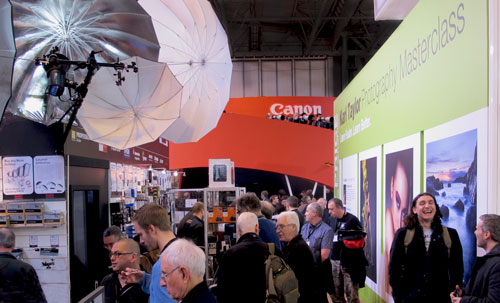
A quality, versatile and robust tripod is essential. Buy a good tripod – you will not regret it! The result will be seen in every image.
A good quality tripod?
Nothing beats a good tripod. Most people don’t use them until they have struggled with sharpness problems for a long time. Then, without thinking, they buy a cheap tripod. Later they have to think again. That’s because cheap tripods fail, wobble and don’t give you the shot flexibility you need. To save problems later, I suggest you buy a good tripod now.
Why buy a good tripod?
Too many of my students and colleagues have told me tales of three legged woes. Remember, it is a common mistake to think any old ‘three legs’ will make your camera stable. This is simply not true. In all cases, a quality tripod really will help stability – and other things.
So, here are some reasons to go for a quality purchase from the start…
Quality Tripod: |
Cheap & cheerful: |
|---|---|
| Solid, stiff at the joints and stable. | Limited by poor engineering. Variable stability. |
| Reliable, highly engineered and robust fittings. | Fittings regularly break. |
| Quality, hard wearing paint or specialist coatings. | Poor or no paint – highly reflective aluminium. Liable to corrosion/wear. |
| Quality footings seal the legs to stop water/dirt entering tubing. | Legs left unsealed let dirt in and grit quickly wears the joints. |
| Strong enough for a specific DSLR size and lens. Check the tripod specifications. | Wobbly with anything larger than a bridge camera. No specifications available. |
| Quality materials used in construction. Materials matched to designed use and weight needs. | Unknown quality aluminium/plastic. |
| Top platform precisely engineered – no movement and good fitting for the tripod head/camera. | Wobbly platform, poor clip, loose fitting. Screws sometimes damage the camera. No interchangeable head option. |
| Quality joints on legs for long life and stable grip. | Leg joints quickly wear and become wobbly with poor materials. |
| Multiple leg positions to allow adjustment on uneven ground/tight spaces. | Fixed leg position. |
| Fully adjustable top column to allow multiple height/angle adjustments. | Wobbly top column. Only up and down adjustment available. |
| Legs can be adjusted to many wide/varied angles. | One angle for legs. |
| Stiff tripod legs to prevent movement when the legs are fully extended. | Wobble increases as the legs extend to full length because joints are poor fit. |
| Reversible top column – so you can under-sling your camera to get near the ground. | Not reversible. |
| Proper hand grips. | No hand grips. |
Quality Tripod head: |
Cheap & cheerful head: |
|---|---|
| Well engineered, interchangeable tripod head option available. | No interchangeable head fitting – or low quality flip-up with low quality quick release. |
| Well engineered, camera safety lock on the tripod head to prevent camera unlock/drop off. | No camera safety catch. |
| Strong, accurately engineered, wear resistant, quick release plate on the tripod head for fast camera fitting/removal. | Fixed camera position – or low quality/breakable flip-up with plastic quick release. |
| Manufacturer has a range of well engineered tripod heads and other accessories available. | Manufacturer not committed to market and does not make tripod heads or non-interchangeable tripod head fitted. |
A cheap tripod will not be your friend
There are other reasons to buy a good tripod, but you get the idea. A cheap tripod will do little for camera stability. The engineering quality is reduced to keep the price down. I am not one to advocate gear lust or spending money where it is not worth it. However, I have come across each of the design and quality flaws above. From personal choice and experience it’s clear only the best is good enough when making your camera stable.
Adaptability
While a quality tripod is great, you normally need to buy a good tripod head too. Cheap tripods usually without them, or have poor quality ones. A good tripod head is an investment for life. Inter-changeable heads are very useful. I have five heads for different purposes: for macro work; small cameras; panoramas; and one for precise adjustment. My most versatile head I use every day for general purpose work. The Manfrotto 322RC2 Heavy Duty Grip Ball Head
![]() is precise robust, reliable, versatile and has never let me down.
is precise robust, reliable, versatile and has never let me down.
Buying a tripod
Buying a tripod is not simple. There are many online advertisements and many brands. How do you choose the right one for you? Largely it is about personal requirements. Look closely at the type of photography you normally do. Try to isolate the important aspects of your photography that will influence the way you use a tripod. Find the properties that best fits the purpose for your tripod. For example, if you do a lot of beach photography you should look for a tripod that has good seal caps on the legs to keep seawater and sand out of the legs. If you do macro photography in the field then you might want a tripod that will turn your tripod head upside down to hang your camera just above ground level.
You should also consider the tripod head. That is the part of the tripod that the actual camera is mounted upon. It gives you flexibility to point your camera without moving your tripod around. Good quality tripods are usually sold only as a set of legs. The tripod head is purchased separately to ensure a good match to its intended use. Reputable tripod manufacturers normally also have a range of heads to match their tripod products.
Weight is a big issue in the field
Many photographers forget about weight. A heavy tripod is great in a studio. It is stable and floor vibration is reduced. However, when you are out and about the studio tripod is just too much to lug around.
I have one tripod model with a steel frame I use in my studio. Also, I have a nearly identical model in carbon fiber. I keep the latter in the car for field work. The difference in weight is just over a Kilo. For practical field use the studio tripod is useless. Unfortunately, it is simply too heavy to carry far.
On the other hand, my carbon fibre tripod is a delight to use in the field. It is easily carried and it performs as well as my studio tripod. However, there can be shortcomings.
Near a road or in windy conditions, vibrations are a problem. So, I hang my camera bag under the tripod platform. The additional weight cuts down vibration and keeps the tripod feet stable. In fact, that is a small price to pay for the reduced weight. Furthermore, it keeps my camera bag off the ground.
The camera bag trick is only possible because carbon fibre is really stiff. Remember, flimsy (but light) aluminium frames are vibration prone. They cannot perform well in windy field conditions or where vibration is found. Moreover, cheap tripods often do not have an under-slung hook to hang your bag.
What should you pay?
Almost certainly, the cost of a tripod indicates its quality. Good tripods use quality materials and tend to be highly engineered. Good engineering and good materials are not cheap. So, if the price of a tripod is in the range £15 – £30 it is unlikely to be long lasting. Further, it will be of limited stability – especially after a little wear under field conditions. Tripods can actually transmit vibrations to your camera from the ground and wind. So, good stability and properly engineered joints are really important.
In the UK good quality tripods start at around £40. You can pay many hundreds of pounds, especially for a professional grade tripod. So, setting yourself a budget is important. Don’t overspend.
Balance quality and cost
The over-riding factor is what type of photography you will be doing with the tripod. Remember, the properties you need are your guide. However, as we said above, pay attention to the tripod quality you need too. There is a balance between good quality and cost. You have to be the final arbiter in how much you pay. Think about it, err on the side of quality with a tripod. A bad quality decision will impact the image quality of your shots.
The manufacturers
So, buying the right tripod is about knowing your own needs. It is also about knowing what type of properties your photographic interests demand of your tripod. Going direct to the manufacturers site and look at their explanations for each of their tripods. You will find more detail there. Moreover, make sure you look up the specifications. There lies the answer to many of your questions about the quality and performance of a tripod. Also, beware of the claims made for ‘general purpose’ or ‘light weight’. Without detailed specifications those terms indicate poor quality engineering or materials.
There are a good range of quality tripod manufacturers. Some names worth checking are listed below as a starting point…
-
- Manfrotto – High quality engineering, wide range of accessories and designs for many purposes. Many models meet the needs of professional photographers.
- Manfrotto on Amazon (associate link).
- Benro – Strong, very robust, many designs for many different environments and purposes.
- Benro on Amazon (associate link).
- Gitzo – Quality engineering, some innovative ideas. Considered by both amateur and professional.
- Gitzo on Amazon (associate link).
Where to buy
It is worth considering where you buy your tripod too. Manufacturers with proven reputations tend to have wide distribution networks. However, they often do not sell their products on their own websites. If they do have their own web shop, the products are often expensive.
Reputable manufacturers depend on their agents and distributors world wide. If they undercut those agents they would not sell their products overseas. So, check their sites. Find what you want. Then, find a dealer near you who can supply it. Alternatively, go online to a dealer who sells the products. You will often get much better prices for shopping around. Another point, reputable manufacturers often have a list of dealers on their site you can contact who are local to you.
Specialised tripods
The range of quality tripods has become very broad. Today tripods are available for nearly every type of camera. Small point and shoot cameras, smart phones, bridge cameras, mirrorless and other cameras all have their own tripod requirements. Likewise, they also have their own quality requirements.
I recently bought a cheap plastic smart phone clip to mount on a small tripod. It cost me very little. Because it was so cheap, I thought nothing of quality issues. It also broke the third time I used it. My phone dropped to the ground. Luckily the glass did not shatter. It could have been an expensive mistake. The replacement good quality, lockable smartphone clip cost about 25% more. However, there is no way my phone is going to fall out of the clip now! It was still cheaper than £20 (bought 2020).
I have also benefited from buying good quality ‘Joby’ or ‘GorillaPod’ flexible tripods (associate link). They are quite expensive. However, you can do great things with them. Flexibility and adaptability are really useful in a tripod.
The point is this…
The lesson is, think carefully, find out everything you can. Then, make a quality purchase – get the best you can afford.
Nowadays, I take my time making a tripod purchase. Consequently, my new tripod suits the purpose I have in mind. But, more important, my camera is safe. In addition, I have the flexibility I need to make the critical shot and I get sharp results. Taking care to seek out a quality tripod helps a photographer get stand out results.
Comments, additions, amendments or ideas on this article? Contact Us
or why not leave a comment at the bottom of the page…Like this article? Don’t miss the next — sign up for tips by email.
Related articles/links:
Photokonnexion Photographic Glossary – Definitions and articles.
Definition: Tripod
Damon Guy (Netkonnexion)
Damon is a writer-photographer and editor of this site. He has run some major websites, a computing department and a digital image library. He started out as a trained teacher and now runs training for digital photogs.
See also: Editors ‘Bio’.
By Damon Guy see his profile on Google+.






